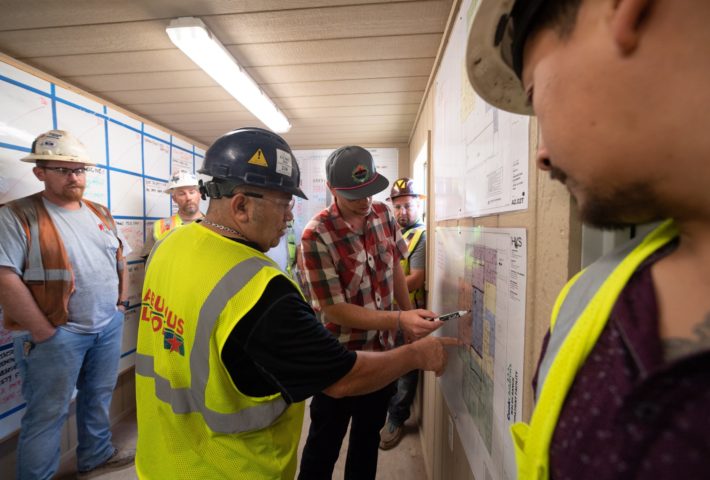Good visual communication is paramount to implementing Lean principles in construction and a major contributing factor for a smooth running jobsite.
3 Ways Good Visual Communication Can Improve Your Jobsite
Back before we ran daily huddles, we use to do a weekly trade partner meeting, where we would ask our trades to describe to everyone what work they had to do for that upcoming week. Then once we got in the field, our drywall trade would cover up our electricians, our fire sprinkler trade would run pipe where ductwork was supposed to go, and the list would go on and on. I’d always complain, why aren’t we communicating this crap in the meeting! The response I would get from the foreman was, we did communicate it! The problem was verbally communicating complex work and overlapping work zones in the field days before it happens was not translating.
The reasons for this communication gap between different teams was a lack of visual communication. In our line of work, visual communication plays a critical role in our everyday operations and outcomes. It allows better trade-to-trade collaboration, leading to improved overall productivity.
If you are suffering from what I’m talking about on your jobsite, here are a few visual communication tools that have helped us build better accountability in the field.
Plans Under Laminate and Color-Coded Mark Ups
Go to the hardware store and get some acrylic laminate to install on the meeting room wall. https://tinyurl.com/yclasm9y
Begin by putting up floor plans and elevations on the wall and put the laminate over it. Get a pack of colored dry erase markers and assign a color each for different trade on the jobsite.
At your meetings have each foreman use the colored markers to visually show everyone where they will be working. By color-coding mark ups on the floor plans your chances of trades understanding each other’s workflow will become much clearer.
Material Delivery Boards
Another visual communication tool is a material delivery board that ensures just-in-time deliveries to make sure materials arrive on site only when needed. By communicating this information visually everyone will understand logistics better and avoid confusion.
You can plan out a weekly calendar board using dry erase markers. Mark up the calendars with realistic timelines for deliveries per day. The visual material board should help the trades answer the following questions:
- What’s being delivered?
- What time will it be delivered?
- Which company is delivering it?
- What type of truck is it coming in?
- Where will it be unloaded?
- How will it be unloaded?
Inspection Boards
Another tool to improve visual communication is the use of inspection boards. They can help relay the inspection dates and current status of any project. As a result, they improve the overall productivity of your jobsite.
You can create a weekly dry erase calendar board with each day of the week listed on it. Make sure that you have enough space on it to include several inspections. Here are some of the questions your inspection board should address:
- What is the inspection for or what is being inspected?
- Who has requested the inspection?
- What date or time has the inspection been requested?
- What date or time will the inspection happen?
- What are the results of the inspection?
Once we started using inspection boards onsite, there was a noticeable improvement in how different trades managed their time to deliver better results. Displaying the inspection results on the board also helps us determine how and where we could improve.
Final Thoughts
As you start adopting the use of these visual communications to improve construction project management, I am sure you’re going to find other areas that could benefit from boards.
Make sure that the visual tools you create for improving communication on the jobsite are easy to understand, set up and use and that the tools are clearly visible. At the same time, you should be able to maintain them regularly.
You’ll find that effective visual communication can give you some time back in your day.
By: Keyan Zandy, COO
Skiles Group
For more from Keyan, see The Lean Builder – A Builder’s Guide to Applying Lean Tools in the Field or Connect with Keyan on LinkedIn.









